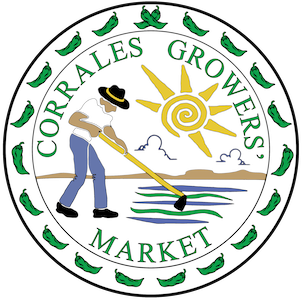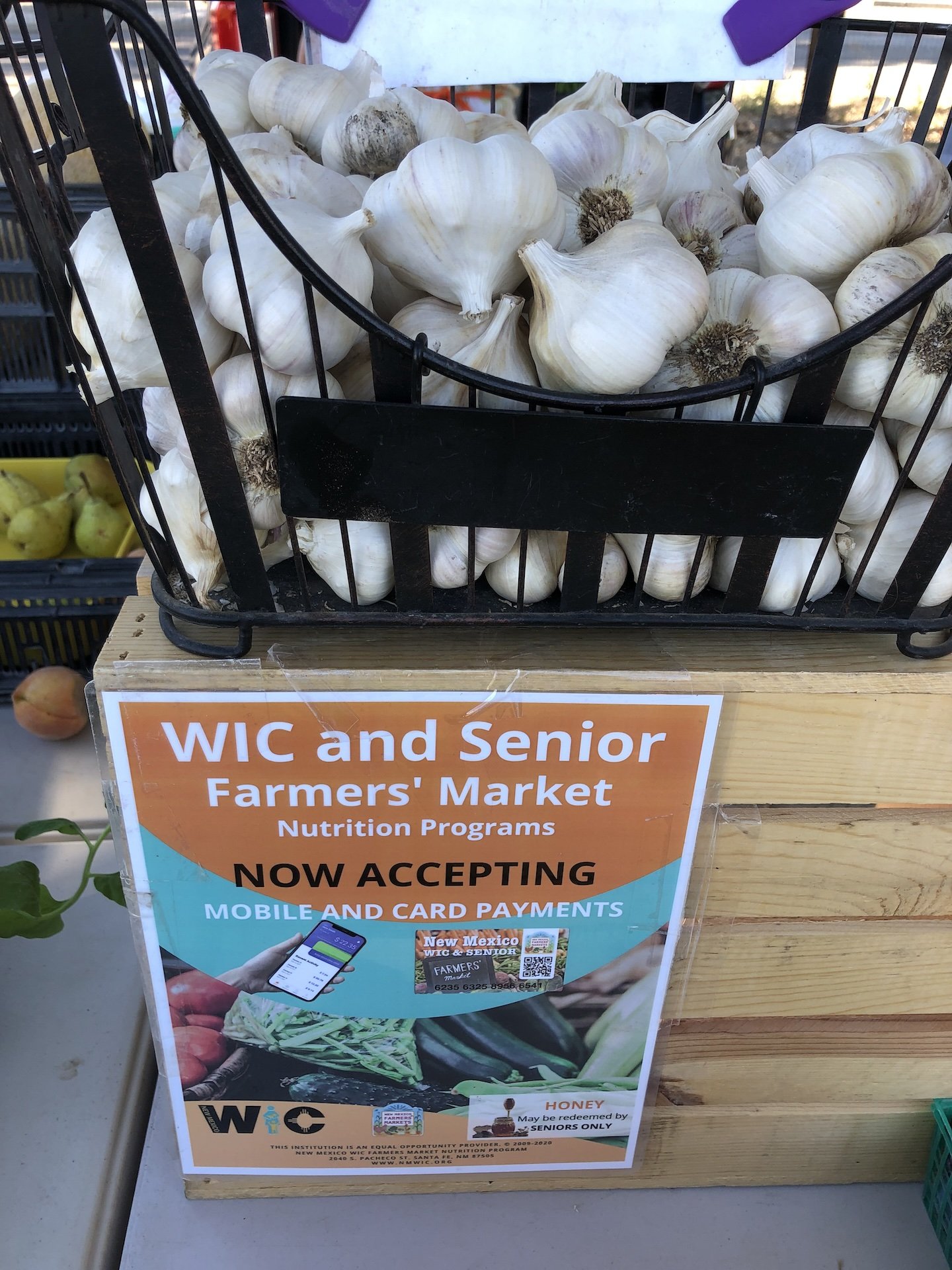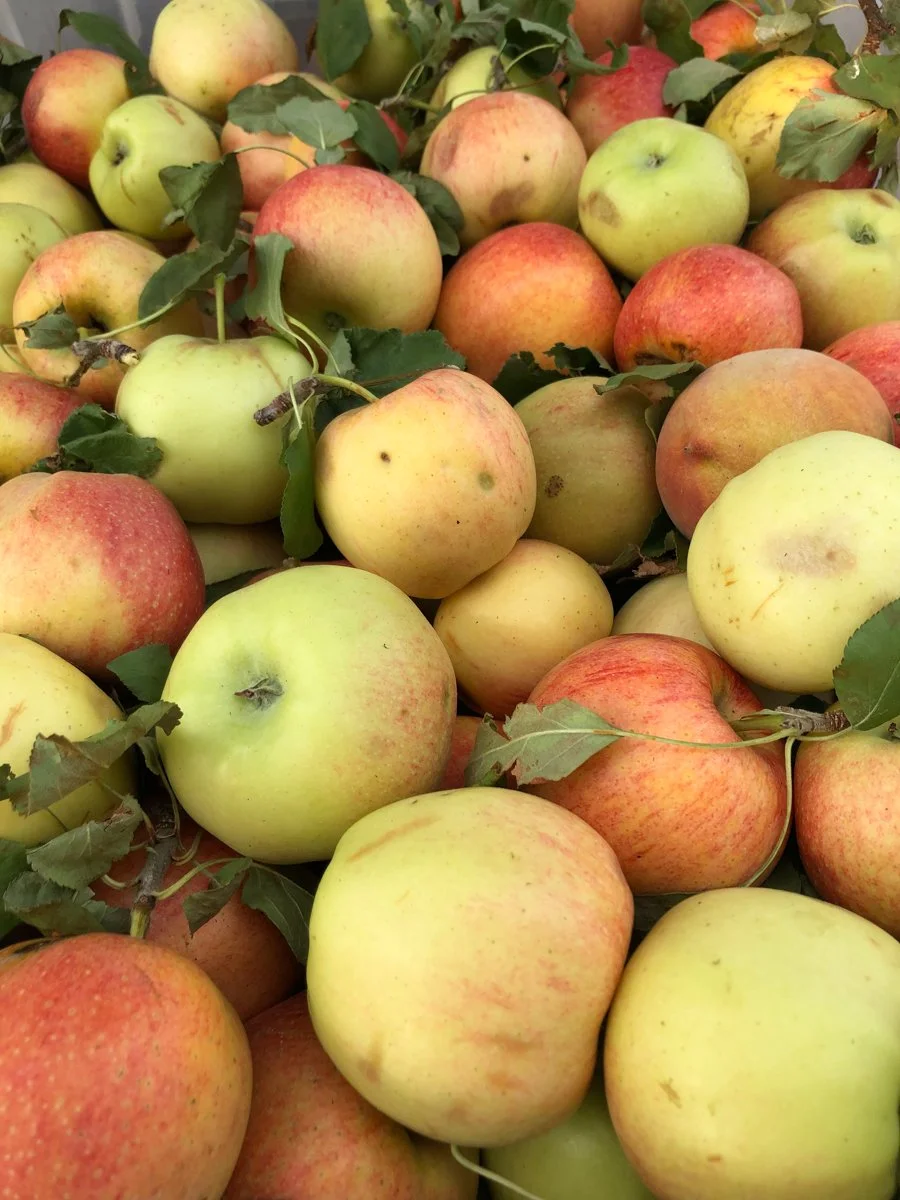Holiday Market, Sunday, Dec 21 - 11AM-1PM
MARKET PLAZA
Market Shop
1st edition Corrales Cookbook now available! Recipes brought to you from the Corrales Grower’s Market
African Market Baskets - Large Round, Mini round, Large Oval, Large shopping Tote, Soe Tray, Red Chile Aprons, Growers Market Logo T-shirts - Arctic Blue, Grey Fog, Warm Gold
Corrales Farmers’ Coalition
Support Farmers in Corrales - Shopping bags
MainStreet
Village Holiday events information
NORTH
1. Corrales Classic Farm
Garlic, Green Onions, Red Onions, White Onions, Beets, Spaghetti Squash, Local Foraged Mushrooms, Fresh Herbs, Garlic Powder, Blue and White Corn Meal, Dried Oyster Mushrooms, Dehydrated Rattlesnake beans, Dehydrated Onions, Dry White Corn, Lavender sachet, Dry herbs, Dry Floral Décor
2. Tony’s Farm
Dehydrated Apples-Plain, Cinnamon, Green Chile, Filtered Honey: Jars and Bears, Bees Wax, Cherry Jam, Peach Jam, Lavender Peach Jam, Lavender Cherry Jam
3. Siempre Tarde
Fruit Pies, Raspberry Bars, Biscuits, Fruit Preserves, Jams and Jellies
4. Susie’s Native Bread
Fresh Tamales to go, Orno Bread, Tortillas, Pueblo Pies, Fruit Bread
5. Dulce Farms
Dry Fower Farm Crafts, Broccoli, Cauliflower, Cucumbers, Carrots, Radishes, Beets, Fresh Herbs, Eggs
6. Queen Bee Farm
Honey, Pollen, Honey Products
EAST
7. EMS Farm
Cooking Greens, Spinach, Collards, Chard, Radishes
8. Enchanted Farm Mushrooms
Fresh Mushrooms: Shiitake, Chestnut, Oyster Dehydrated gourmet mushrooms and powders, Grow kits. Pre-order emails to: store+63407358090@g.shopifyemail.com
9. As Nature intended
Carrots, Baby Carrots, Parsnips, Turnips, Turnip Greens, Salad Turnips, Pac Choi, Arugula, Radishes, Watermelon Radishes, Beets, Beet Greens, Onions Cippolini, Scallions, Leeks, Kohlrabi, Mustard Greens, Kale Curly, Collards, Swiss Chard, Broccolini, Spinach, Cilantro, Celery Powder, Dill Seed Powder, Dill Dried, Romain Leaf Lettuce.
10. Corrales Chile Company
Onions, Biscochito mix. Gift packs; Frozen Green Chile
SOUTH
11. Bob and Janet’s Farm
Hand painted Gourd
12. Chile del Sol
Honey, Honey products
13.Bad Coyote Farm
Huckleberry Jam, Strawberry Popcorn, Sweet Potato Butter, Dried Peppers: Chiltepin, Thai, Chile de Arbol, Peri Peri), Fermented Hot Sauce
14. Bar Star Family Garden
Apples, Carrots, Onions, Squash, Elk Dog Chews
15. Farm 448
Relish, Pickles, Pickled vegetables, Flavored Vinegars and Oils, Pepper sauce
16. Dr. Deb’s Apothecary
Handmade therapeutic products from indigenous medicinal herbs, aroma therapy, herbal and aromatherapy facial masques, bath salts, sachets, smudges, single herb, and herbal blend teas
WEST
17. Milligan Ranch
Handmade Goat milk Soap-plain and scented, Wood Crafts, Pork- Ground, Ribs, Roasts, Chops, Bacon, loose and link sausage, Goat-Ground, Chops, Lamb-Ground, Chops, Beef Cuts
18. NM Prickly Pear
Prickly pear Jelly, Prickly pear Syrup
19. Sile Pastures
Tallow skincare Gift boxes, Grass fed and finished lamb and Beef, French Chicken, Tallow skin products
20. At Last Farm / Sandia Mountain Sauce
Farm Crafts and Art: Bird Houses, Cups. BBQ Sauce-Red, Green and Christmas
21. Trilogy Beef Community
Pre-order: https://trilogybeef.grazecart.com; Beef Jerky, Tallow products, Steaks-Ribeye, NY strip, Flat iron, Delmonico, Chuck, Roasts- Brisket, Chuck, Rump, Top round, Sirloin Tip, Ribs-Short and Back, Premium Ground, Special Cuts-Fajita, Kabob, Stew, Osso Bucco, Beef Liver, Heart, Tongue, Kidney, Oxtail, Suet, Marrow bones, Freezer Beef options-Whole, Half, Quarter, Pork cuts, Green Chile Sausage
22. Masa Padre
Focaccia, Sourdough Bread, Olive Oil Muffins, Cowboy cookies
Preserve the Harvest: Canning and Pickling
REPOSTED FROM AUGUST 13, 2020 - WRITTEN BY LAURA FIORI
Seasonal produce is everywhere in Corrales. If you are like most people, preserving means canning, which can seem complicated and time consuming if you’ve never tried it. But there are easy and fast ways to have locally grown veggies all winter. This article focuses on Pickling, and Canning. Check out our previous article about Freezing and Dehydrating, too. It’s time to stock up and preserve during the peak of the season!
Pickling yields delicious results and doesn’t take long. A “quick pickle”, also known as refrigerator pickles, can be eaten within hours or days of preparation. Quick pickles are simply sliced or whole vegetables that are placed in a jar and pickled in a brine of vinegar, water, salt, desired spices, and sometimes sugar, and then placed in the refrigerator. Lots of delicious recipes are available online, here is a recipe to get you started!
Canning uses glass jars with pressure-sealing lids to preserve the canned contents using a water bath or pressure canner. The water bath method can be used to preserve foods such as high-sugar jams and jellies or acidic tomato products and pickles. Water bath canning is accessible to most homeowners.
Pressure canning is required for non-acidic foods including many vegetables like beans and potatoes. A pressure canner (as opposed to a pressure cooker) is required for canning these items, and you should get some water-bath canning experience before purchasing and using a pressure canner. Canning is alive and well in Corrales, and all over!
If you’d like more information, NMSU and Penn State have published some great articles to get you started! For other ways to preserve the harvest, check out this website, under the ‘Food Preservation’ section.
Preserve the Harvest: Freezing and Dehydrating
REPOSTED FROM AUGUST 25, 2019 - WRITTEN BY LAURA FIORI
Harvest time! This is a great time of year to dive into preserving some fresh veggies for the winter ahead. Seasonal produce is everywhere in Corrales. If you are like most people, preserving means canning, which can seem complicated and time consuming if you’ve never tried it. But there are easy and fast ways to have locally grown veggies all winter. This month, we will spotlight 4 simple ways to preserve the harvest: Freezing, Dehydrating, Pickling, and Canning. So, stock up and preserve during the peak of the season!
First method for preserving the harvest - Freezing
Fresh and local produce is everywhere in Corrales! Freezing is the most commonly used food preservation technique. In fact, most people use this method to store leftovers while forgetting that it can also be used to preserve fruits and veggies. Gather the appropriate containers for storing your produce such as plastic freezer bags and storage containers. You’ll also need some freezer space and a reliable electric supply.
Freezing for long-term food storage does require some know-how to get the best results. Before freezing, fruits and vegetables need slicing and blanching. Blanching is submerging a fruit or vegetable in boiling water for a couple of minutes to partially cook it. This stops the ripening process and is easy to do. Then package and freeze! Freezer burn is caused by your produce being exposed to air so make sure to squeeze the air out of baggies. Also, freeze containers quickly to reduce the formation of large ice crystals inside. Complete instructions can be found online:https://extension.psu.edu/lets-preserve-freezing-vegetables
Second method for preserving the harvest - Dehydrating
Dehydrating is fast and fun! Dried food can come in many forms — from fruit leathers to dried veggies — and they all can be dried using an electric dehydrator, the oven, or the sun! Look online for solar food dehydrator plans if you want to use this method.
The secret to good dehydrating is heating the food so the moisture is eliminated quickly enough to not affect food flavor, but not at a temperature that is hot enough to cook the food. Air circulation is also important as it carries the moisture away from the food. Electric food dehydrators can be purchased for between $30 to $260 (we’ve used less expensive models with good results). You can also use your oven to dehydrate fruits and vegetables at about 140F (leave the oven door open to allow moisture to escape – electric ovens only). Check online for oven dehydrating times: https://extension.psu.edu/lets-preserve-drying-fruits-and-vegetables-dehydration
Visit us in Corrales
500 Jones Rd. Corrales, NM 87048
We are located on Corrales Road, just south of the Post Office. Parking is available on either side of the market, both in the Post Office parking lot and attached gravel lot. there is also more parking at the Corrales Recreation Center and Top Form Arena at the back of the Rec Center.
Traveling from Albuquerque: Travel north on Coors Road, past Alameda Blvd. Continue north on Corrales Road approximately 2 miles. The Market is located on the left, just before the Post Office.
Traveling from Rio Rancho: Travel east on Southern Blvd/Meadowlark Lane, past NM-528 into Corrales. Turn north on Corrales Road, and drive approximately half a mile. The Market is located on the left, just before the Post Office.
Traveling from Bernalillo: Travel south on NM-528. Turn left on Corrales Road/NM-448 and follow for approximately 4.5 miles. The Market will be located on the right, immediately after the Post Office.
2025 Winter Market Schedule
Holiday & Winter Markets: Sundays, Dec 21 , Jan 4, Feb 1, Mar 1 — 11AM-1PM
Our Mission
The Corrales Growers’ Market operates to support the traditional agricultural economics of the Village of Corrales and to provide community access to sustainable sources of locally grown food. We support the preservation of farmland, the sustainability of family farms and local agricultural production by providing agricultural producers a marketing facility for the sale of their products directly to consumers.









